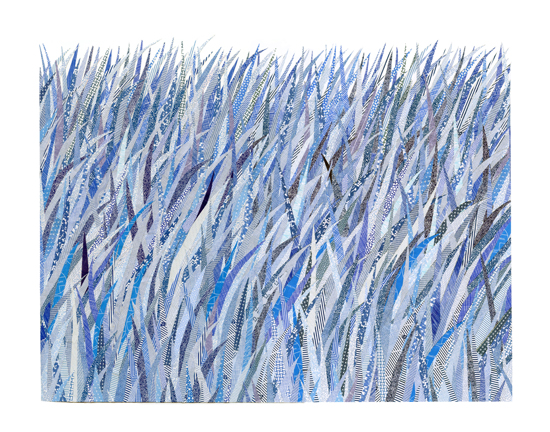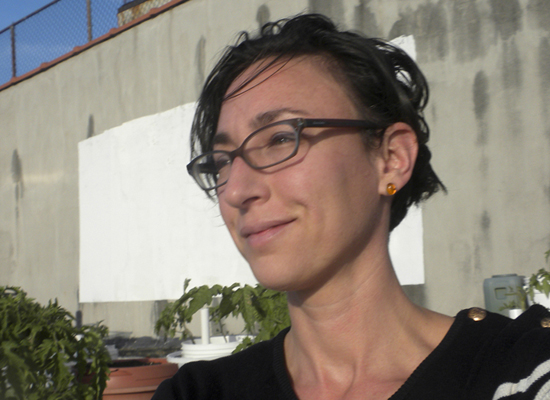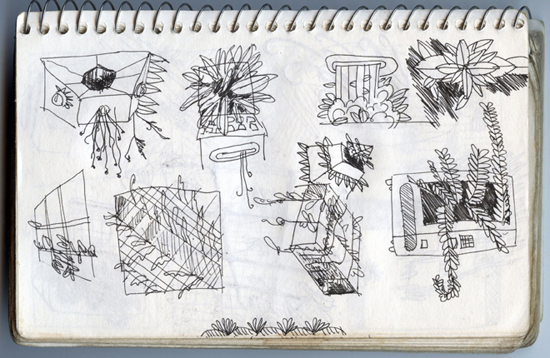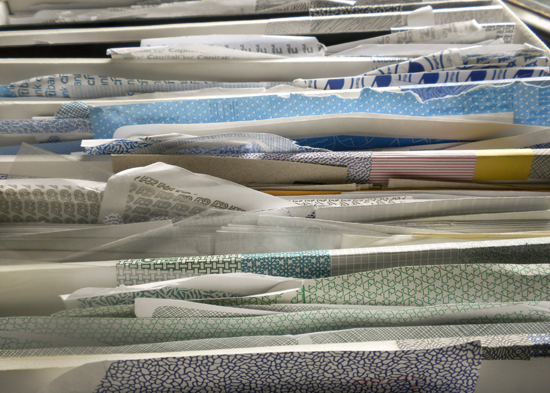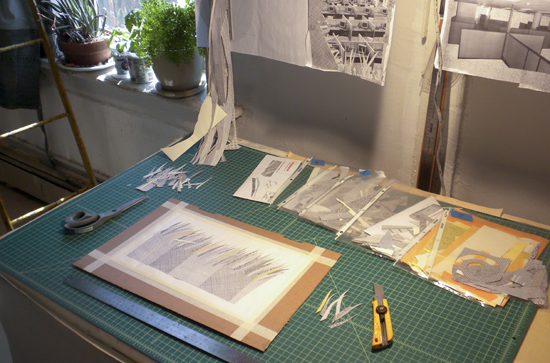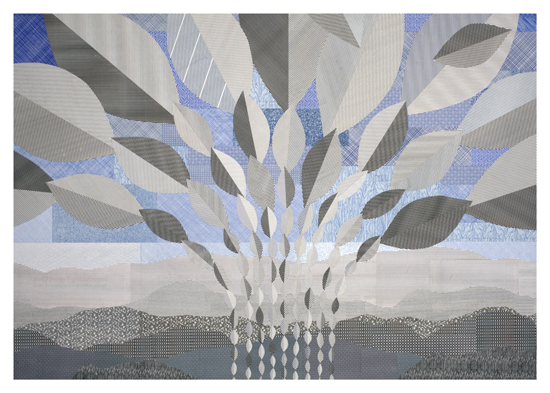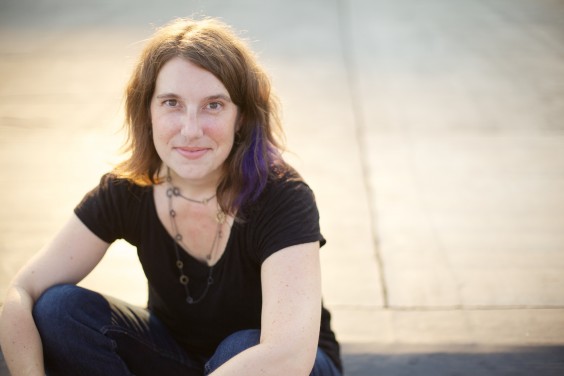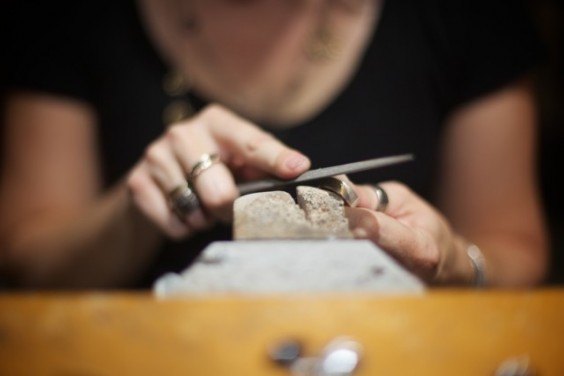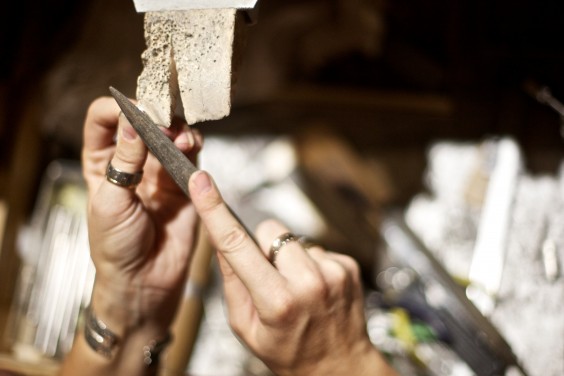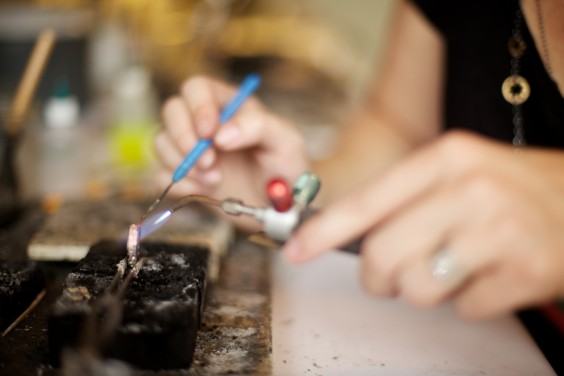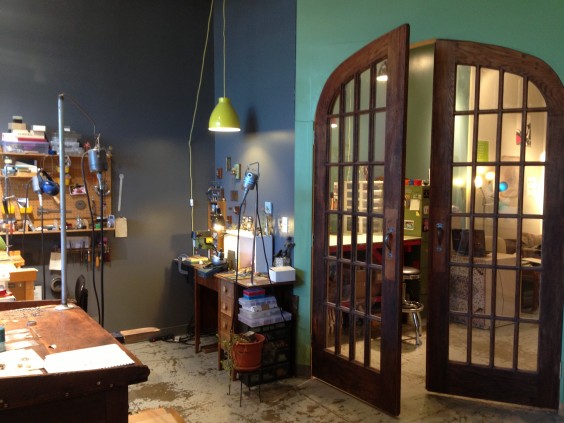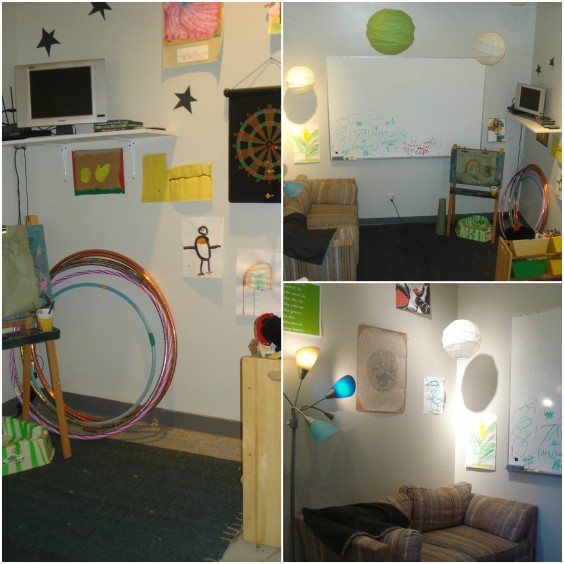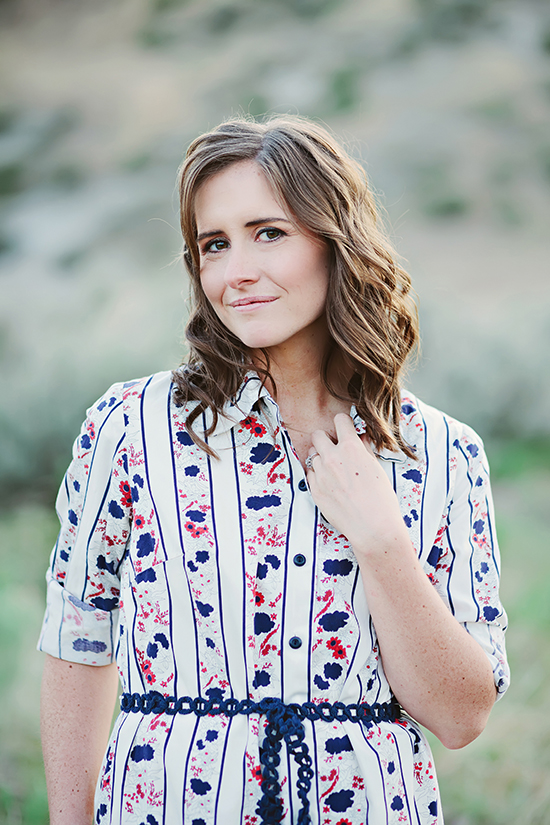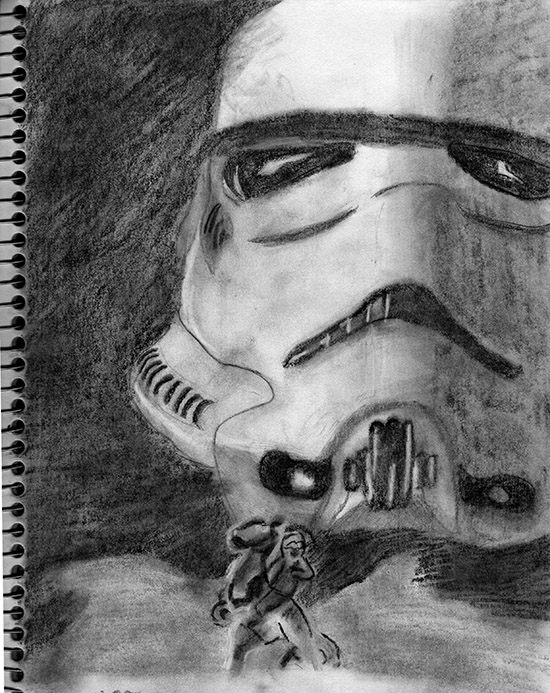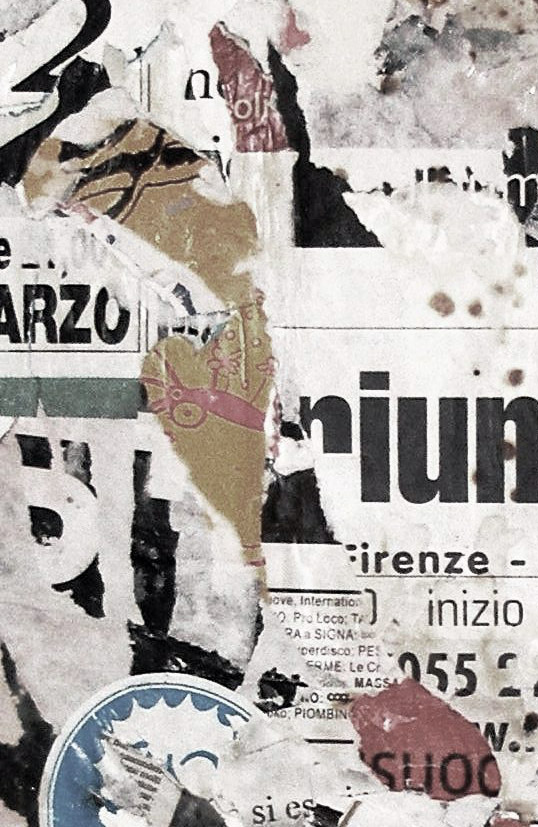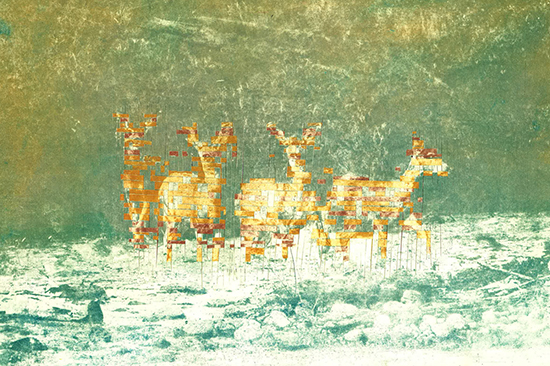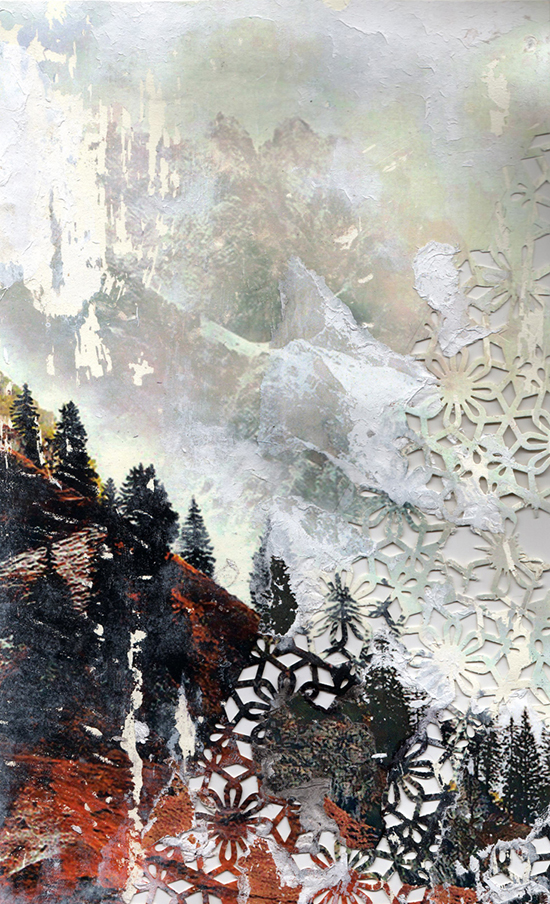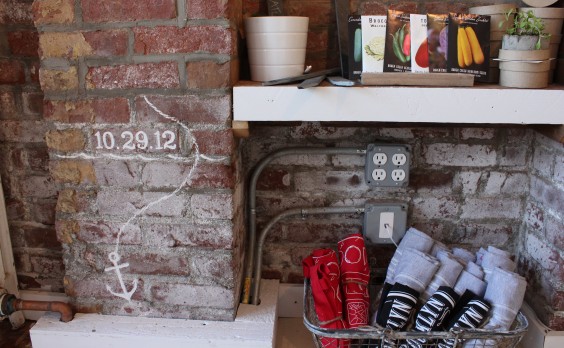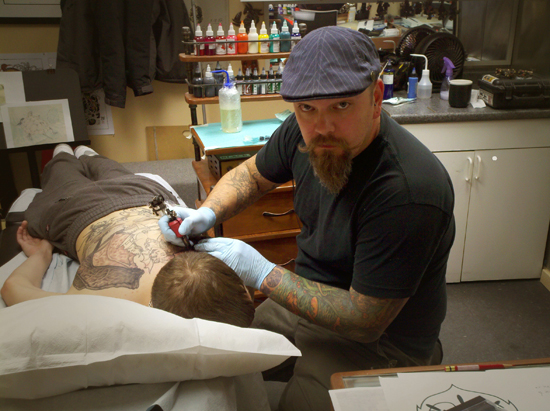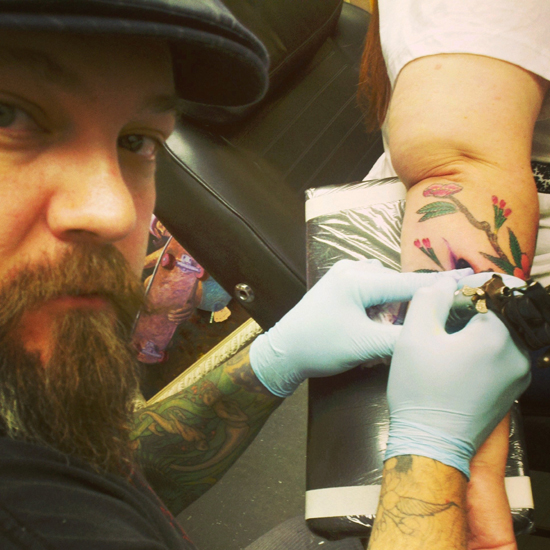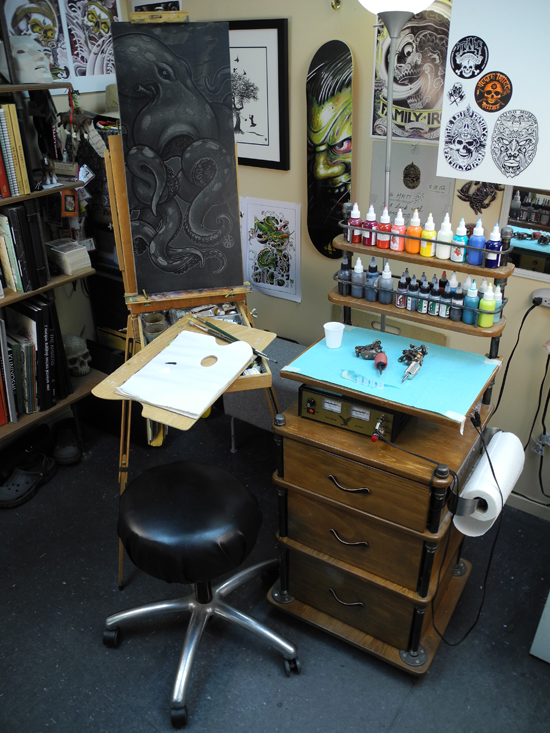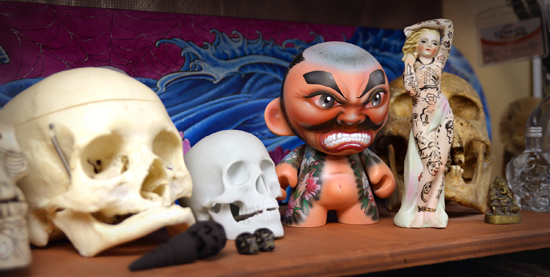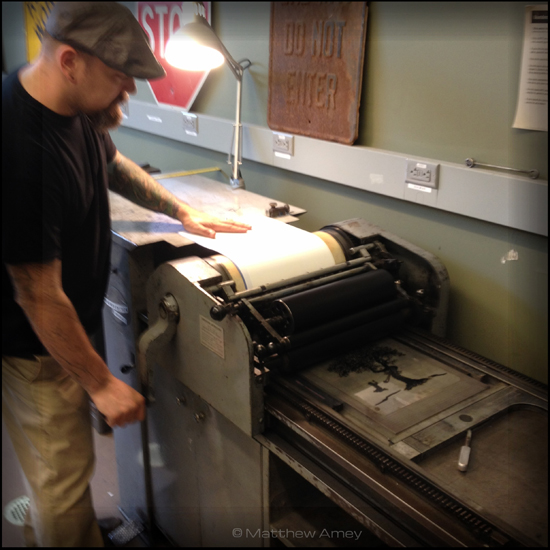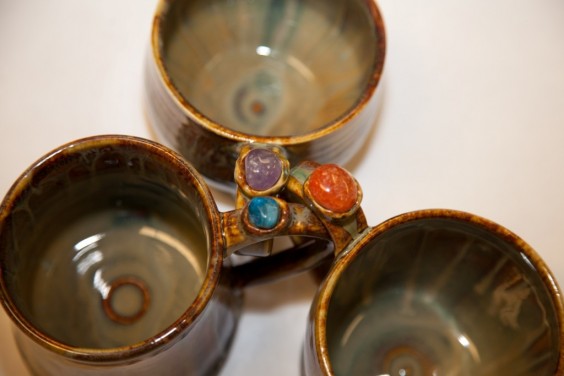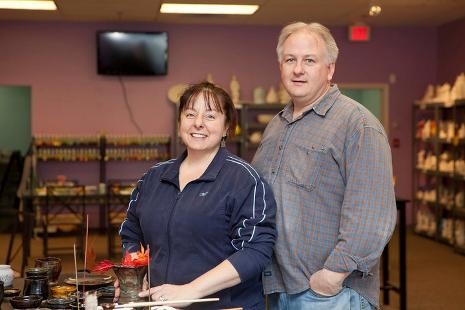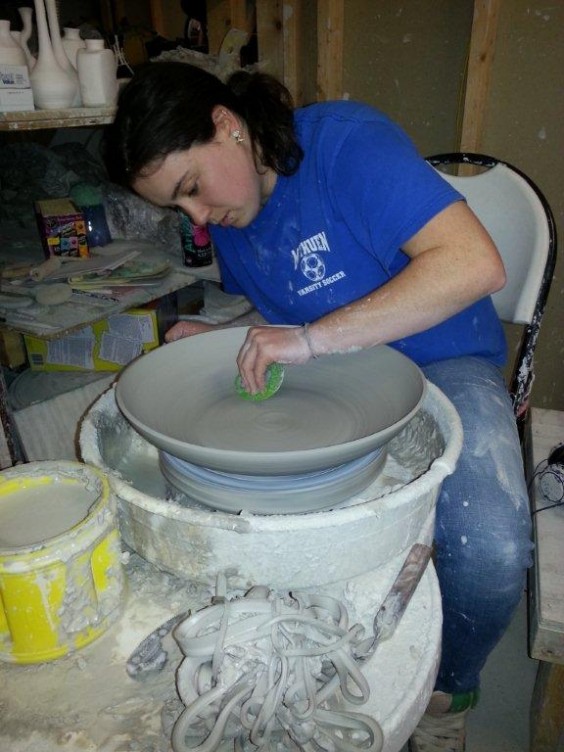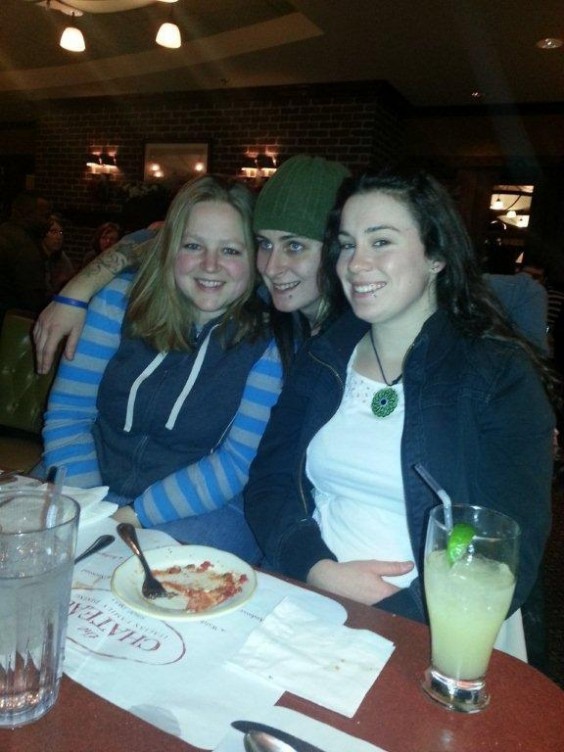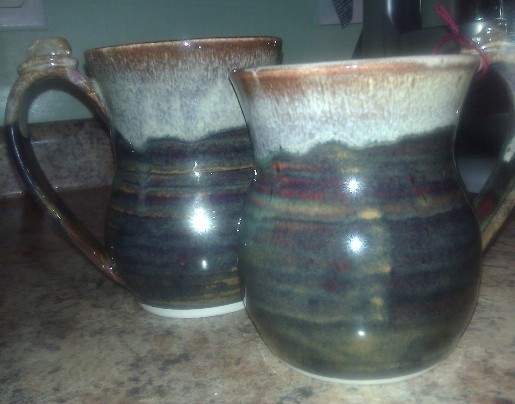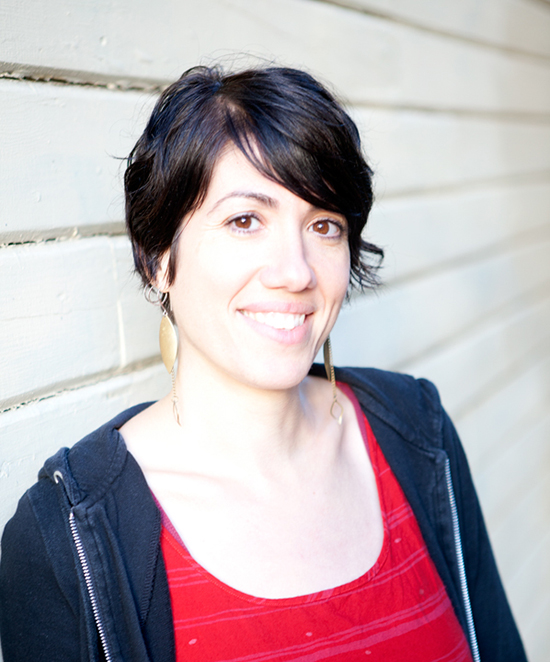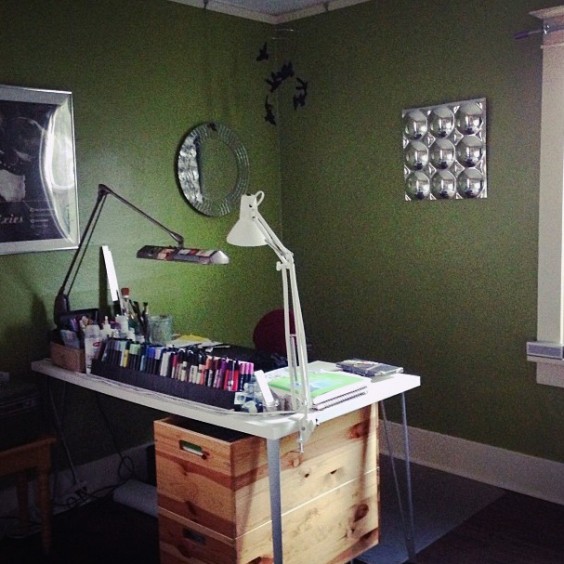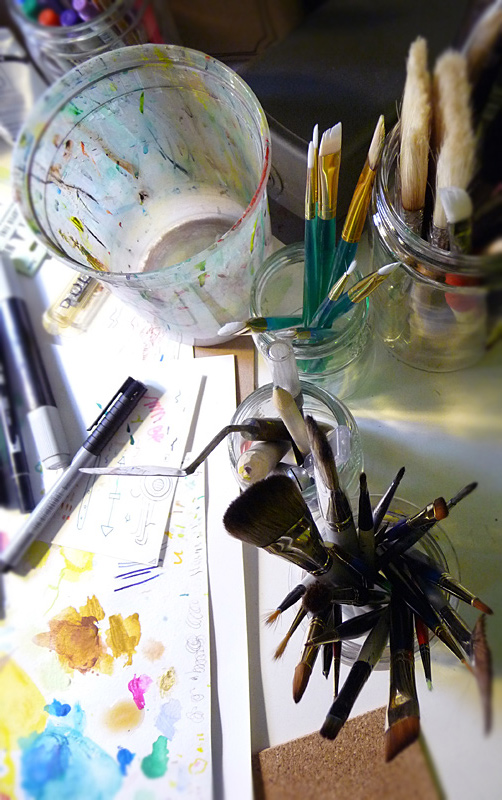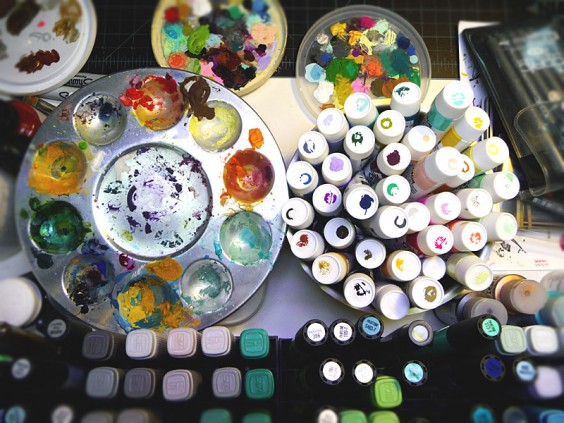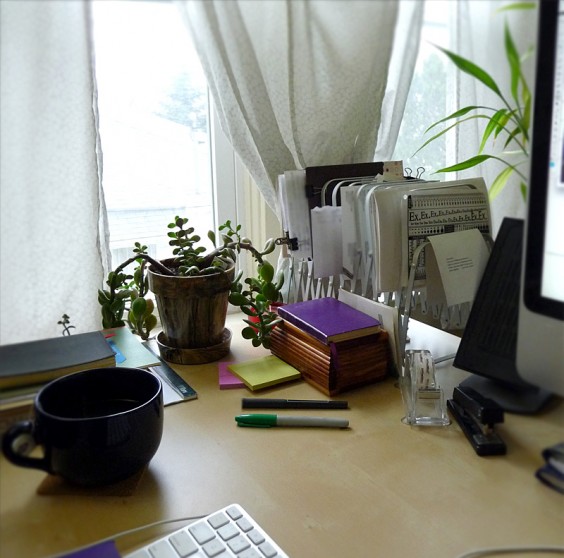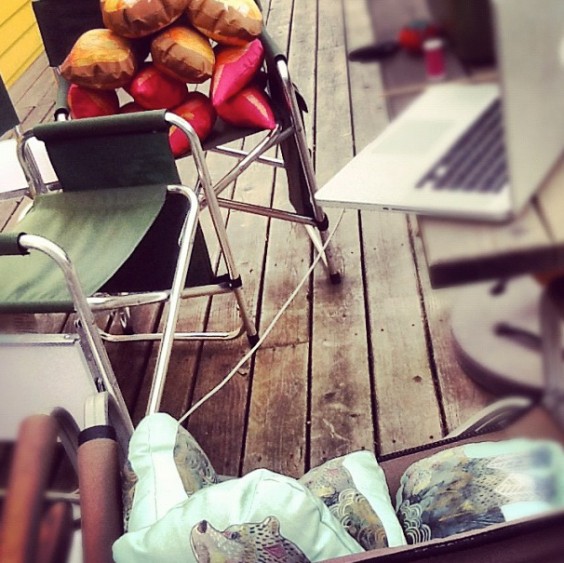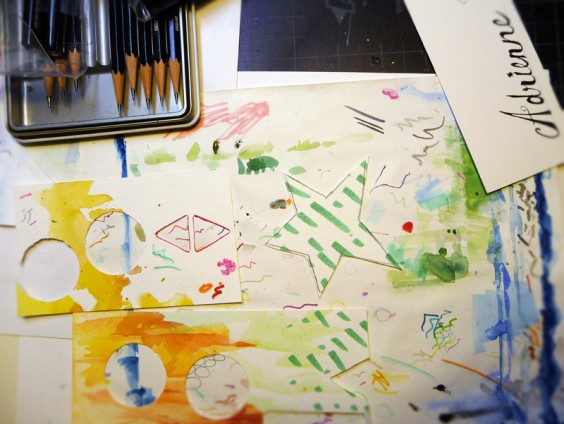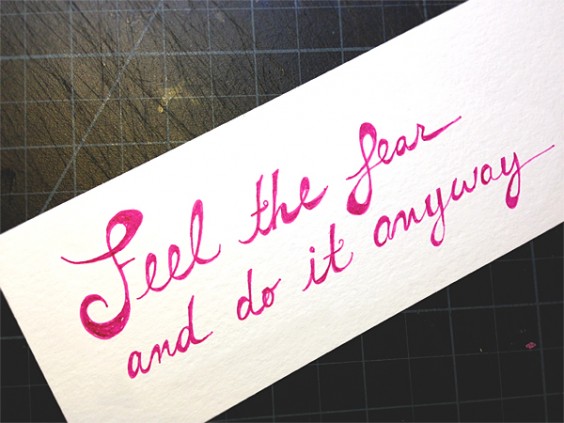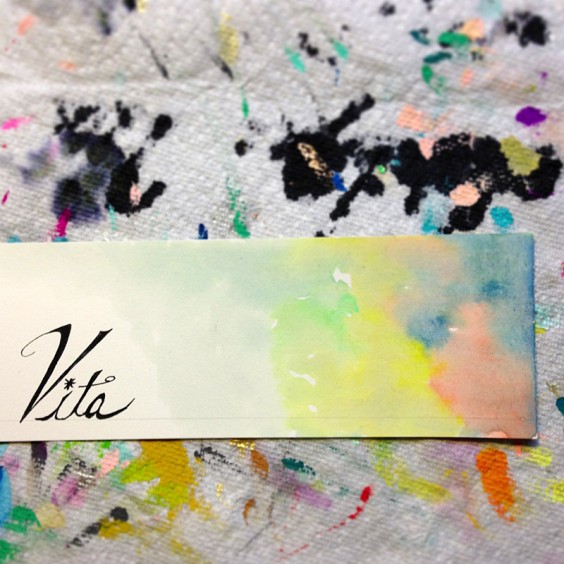 Living in New York City you learn very quickly not to judge a book by it’s cover – every door hides a secret in this city. Upon walking up to Kasia Wisniewski and Nicholas Foley’s building I had no idea what was in store. Only a few blocks from my own place, and on a block with manicured brownstones, Kasia and Nick’s door was gated and uninviting. But upon being greeted and swept upstairs to their apartment by Kasia, I was surprised to be standing in the treasure hidden from the street. Their home is what I imagine Marie Antoinette’s place would look like if she were a Brooklyn artist – a mix of Baroque accessories, Mid-Century furniture, antique sewing machines, dress forms. And right there, among their beautiful furniture and artifacts, was an industrial laser cutter, taking up what I imagine could be a sizable second bedroom.
Living in New York City you learn very quickly not to judge a book by it’s cover – every door hides a secret in this city. Upon walking up to Kasia Wisniewski and Nicholas Foley’s building I had no idea what was in store. Only a few blocks from my own place, and on a block with manicured brownstones, Kasia and Nick’s door was gated and uninviting. But upon being greeted and swept upstairs to their apartment by Kasia, I was surprised to be standing in the treasure hidden from the street. Their home is what I imagine Marie Antoinette’s place would look like if she were a Brooklyn artist – a mix of Baroque accessories, Mid-Century furniture, antique sewing machines, dress forms. And right there, among their beautiful furniture and artifacts, was an industrial laser cutter, taking up what I imagine could be a sizable second bedroom.
That’s another thing about New York City – you have to make it happen by any means possible. For Nick and Kasia that mean taking out a wall, building a ventilation system, and giving up precious real estate to fit the laser cutter that helped Kasia leave her job in luxury fashion design and start working for herself. But nothing is wasted – they have used the cutter to create Kasia’s wall art and jewelry, to cut stencils to create other designs, and Nick even used it to cut wood to create a suspended indoor garden. Getting to tour their space and talk about their work was truly inspiring and a reminder that nothing is earned in this city without a little sacrifice.
 Where do you find inspiration within this space?
Where do you find inspiration within this space?
We are collectors! We’re surrounded constantly by reminders of things we love- from books and photographs to piles of fabric and knick-knacks from our travels. Living in Brooklyn has forced us to be creative with a limited space, so we’ve put our passions front and center. Nick is starting an indoor vegetable garden in the corner of our living room, so a lot of it is creating our own inspiration as well.
Where does down time fit into a day in the studio?
Working from home means we’re working on and off from the time we get up to the time we go to sleep – but when you’re doing stuff you like, it’s not work. I usually take an hour or so to go for a run around midday and we always watch something funny during dinner at the end of the day.
We also have a blog where we detail our food and design experiments, so working on that is sort of a treat for us as well.
 What are your most essential tools?
What are your most essential tools?
Our most essential tool is our laser cutter- we use it not only to create products like our You Are Here map, but we also use it to create tools for our other projects, from stamps and stencils to jigs and frames. My industrial sewing machine (a birthday gift from Nick to me) is another Collected Edition MVP.
What was the toughest lesson you learned as a young designer starting a business?
Transitioning from a full-time job in a high stress fashion company to being my own boss was terrifying. I think the hardest part was really realizing how fast time goes by when you’re working on projects by yourself. At first I would beat myself up if I didn’t have something solid and concrete at the end of the day – but mistakes and revisions are 95% of the design process.

 What advice would you offer yourself of 5 years ago?
What advice would you offer yourself of 5 years ago?
I would encourage myself to follow my instincts and believe in my vision. I think all designers suffer from insecurity, but if you focus on making good work and being true to your aesthetic, others will get onboard.
How do you set goals for yourself?
We both have a very clear idea of what we want our lives to be like in 5 years or 10 years – but the path to get there is still developing! We are both big fans of lists – both small detail and big picture. I try to set manageable goals I know I can reach, while always keeping in mind the endgame.

 How and when do you decide to celebrate a victory?
How and when do you decide to celebrate a victory?
Every victory is celebrated by figuring out how to win the next victory.
 What quote keeps you motivated?
What quote keeps you motivated?
This Samuel Beckett quote pretty much sums up creative entrepreneurship. I think there are very few designers that ever feel completely satisfied with their work – you should always be aiming to “fail better” on the next go-round.
What are some new skills you are trying to acquire to perfect your craft?
I’m starting to experiment with casting. I love using tutorials from sites like Instructables to inform my experimentation. We also have an electroforming set-up that we both worked with some in college but is now lying dormant – that’s another avenue we have been exploring and requires a lot of trial and error to perfect.
 How do you recharge your creativity?
How do you recharge your creativity?
The only time I can ever really relax is when we go away – whether on a proper vacation or just a day trip. A change in scenery does wonders for the mind.
Where does collaboration come into play with your craft?
Since so much of what we do is custom, each piece is really a collaboration with the client. My favorite thing is to work closely with a customer to bring an idea to life – it’s a beautiful thing to know that what you do brings happiness to another life.

